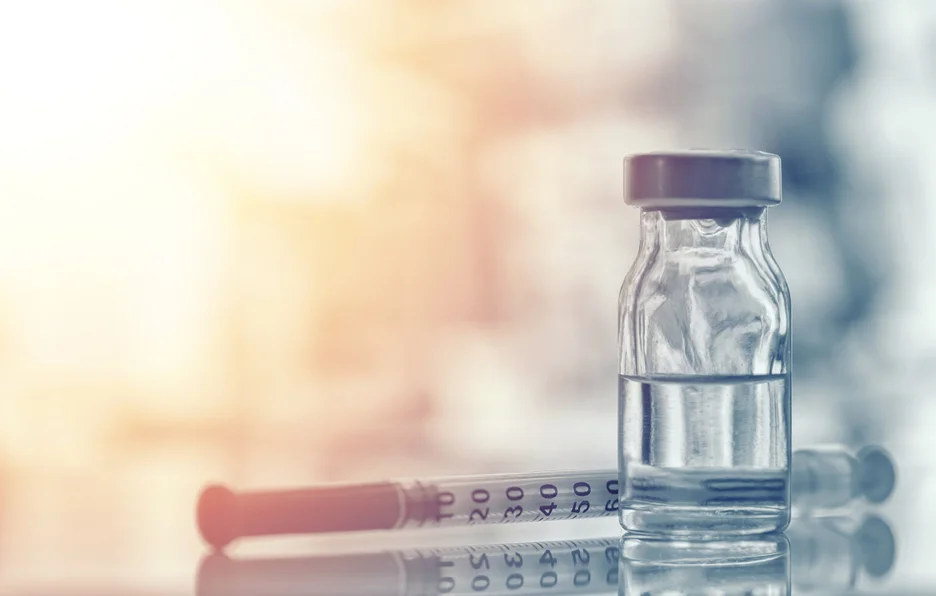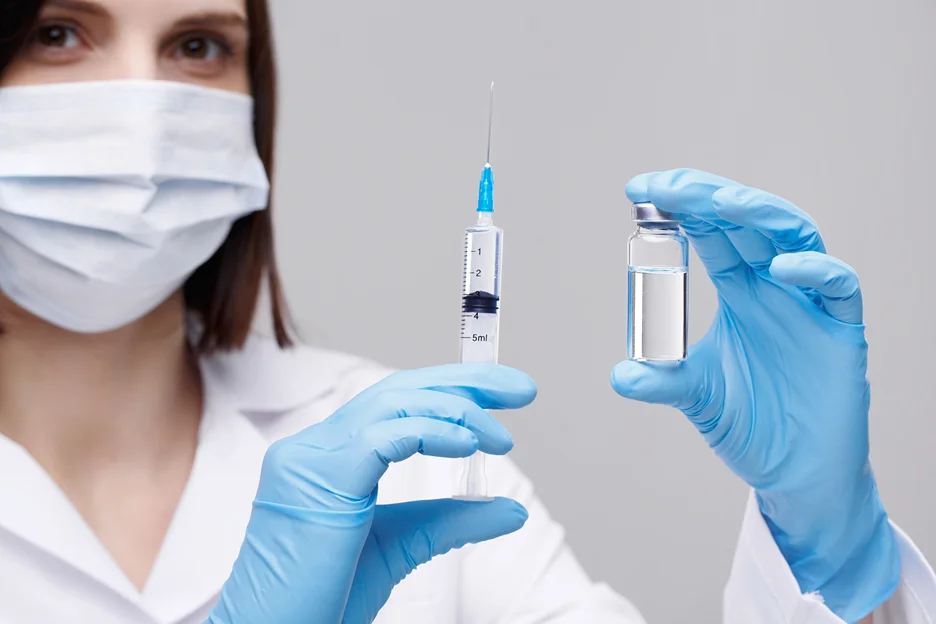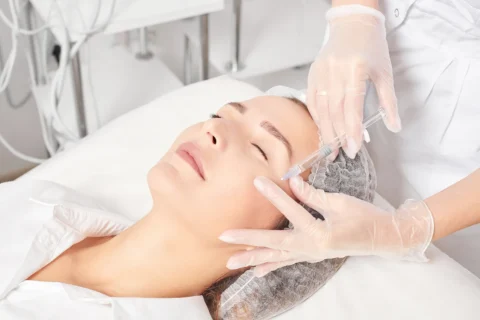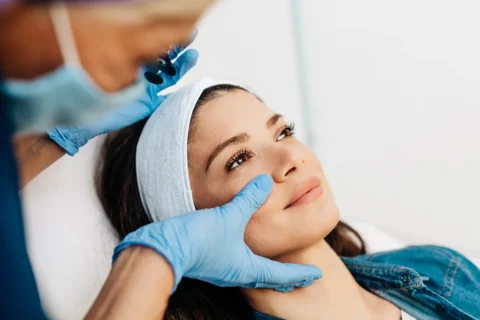The Science-Backed Secret to Collagen Stimulation
Polydeoxyribonucleotide (PDRN) is a naturally occurring component of DNA that stimulates collagen production and boosts cell growth.
PDRN treatments result in a significant increase in collagen production, leading to smoother skin, reduced fine lines and wrinkles, and improved skin elasticity.
PDRN is injected into the target areas using a fine needle, which stimulates collagen production and boosts cell growth. This process triggers a natural response that rejuvenates the skin.
PDRN has been clinically proven to be safe and effective, and enhances stimulation of collagen production and boosts cell growth quickly. A typical PDRN treatment plan consists of 3-4 sessions, spaced 3-4 weeks apart. A session usually lasts 30 minutes to an hour.
What Is PDRN Treatment?

PDRN is a naturally-occurring building block in DNA that plays a crucial role in repairing damaged skin cells and stimulating collagen production.
But how does it work? PDRN treatment stimulates collagen production and enhances cell proliferation, which can lead to improved skin health and appearance.
It’s often used in combination with other treatments to achieve optimal results. Think of it like a workout routine for your skin – it helps your skin cells’ natural repair processes get a boost.
Now, you might be wondering what PDRN is made of. It’s extracted and purified from the sperm of salmon trout or chum salmon, which might sound unusual, but trust us, it’s safe and effective.
With its high bioavailability and short half-life, PDRN treatment can be used to address various skin concerns.
So, what can you expect from PDRN treatment?
When you undergo this therapy, you can expect it to stimulate your skin cells’ natural repair processes, leading to improved skin health and appearance.
Benefits of PDRN Treatments
- Stimulate your skin cells to produce more collagen. This means your skin will become more elastic and hydrated over time.
- PDRN also promotes cell growth and renewal, which can help repair damaged skin tissue and improve your skin’s texture and tone. Think of it like a skin reset.
- If you’re dealing with redness or inflammation, PDRN treatments can help calm your skin down. This can minimize pores and reduce wrinkles, giving you a more even complexion.
- Finally, PDRN accelerates the skin rejuvenation process, which means it can help your skin heal faster and look smoother and more radiant.
One of the best things about PDRN treatments is that they can have cumulative effects. This means that the more you use them, the better your results will be over time.
Plus, you can combine PDRN with other skincare treatments like hyaluronic acid and niacinamide to get even better results.
PDRN Treatment Procedure

So you’re considering a PDRN treatment. What can you expect from the procedure?
Let’s start with the preparation. Before the treatment, your skin will be thoroughly cleansed to prevent any complications. You may also be given a topical numbing cream to reduce any discomfort during the procedure.
PDRN is injected into the target areas using a fine-gauge needle. The technique and depth of the injection may vary depending on the area being treated and the desired outcome.
PDRN stimulates the metabolic activity of your cells, which promotes the growth of fibroblasts and stimulates collagen production. This process is crucial for wound recovery and skin rejuvenation.
The procedure is relatively quick, taking around 30 minutes to an hour to complete. The length of time will depend on the number of areas being treated.
But how many treatments will you need? This will depend on your individual cellular turnover rate and the outcome you’re looking for.
Expected Results and Timeline
You’re probably wondering when you can expect to see improvements in your skin texture and appearance after receiving PDRN treatment. The answer is, it can happen within a few days. However, this timeline varies from person to person, depending on your individual cellular turnover rate.
So, how does PDRN treatment work? It stimulates collagen production, which is essential for the skin rejuvenation process.
Now, you might be curious about when you can expect the best results. Typically, it’s after 3-4 treatments, spaced 3-4 weeks apart. This allows for optimal collagen production and skin rejuvenation.
Let’s break it down:
- Are you wondering if PDRN treatments get better with time? The answer is yes. Results can be cumulative, with each subsequent treatment building on the previous one to produce more pronounced and long-lasting improvements in skin texture and appearance.
- How long do the effects of PDRN treatments last? They can last several months, but you may need periodic touch-ups to maintain your desired results.
- What if you don’t see results right away? Don’t worry, individual results may vary. Some people experience noticeable improvements in skin texture and appearance within a few weeks, while others may take longer.
- How many treatments do you need to achieve optimal collagen production and skin rejuvenation? A series of 3-4 treatments is usually recommended.
- Why is collagen production so important? It’s essential for improving skin texture and appearance. That’s why PDRN treatments work by stimulating collagen production.
Difference Between PDRN and Skin Boosters

The main difference between the two lies in their functions.
PDRN treatments stimulate collagen production and have wound-healing properties, making them perfect for skin rejuvenation and regenerative medicine. Think of it like a construction site – PDRN treatments lay the groundwork for new collagen to form, which helps to repair damaged skin.
On the other hand, skin boosters provide hydration to the skin, typically through hyaluronic acid. They’re like a refreshing drink for your skin, plumping it up and making it look more radiant.
Another key distinction is their composition. PDRN treatments are made from a naturally-occurring building block in DNA, whereas skin boosters are usually derived from hyaluronic acid. This difference affects their anti-aging effects, with PDRN treatments providing more pronounced results.
Think of PDRN treatments as a long-term investment in your skin, while skin boosters are more like a quick pick-me-up.
Now, you might be wondering if you can combine both treatments. The answer is yes, you can. Combining PDRN treatments and skin boosters can provide the best of both worlds – hydration and collagen production.
However, keep in mind that PDRN treatments can address various skin concerns, including aging skin, scars, and acne, while skin boosters are generally limited to treating fine lines, wrinkles, and skin laxity.
So, which one is right for you? Consider your skin concerns and goals, and choose the treatment that best suits your needs.
PDRN Chemistry and Pharmacokinetics
PDRN is a mixture of deoxyribonucleotides with molecular weights ranging from 50 to 1,500 KDa, with a peak at 132 KDa.
This molecular weight distribution is crucial in understanding PDRN chemistry, as it affects the compound’s bioavailability and degradation.
But where does PDRN come from? It’s extracted and purified at high temperature from the sperm DNA of Salmon Trout (Oncorhynchus mykiss) or Chum Salmon (Oncorhynchus keta), resulting in a highly pure active substance – over 95% pure, to be exact.
Now, let’s look at how PDRN behaves in the body. The pharmacokinetics of PDRN reveal a rapid absorption, with measurable levels observed just 15 minutes after injection, and peak levels 1 hour after administration.
So, what does this mean for PDRN? Here are some key points to consider:
- Do you know what PDRN’s bioavailability is? It’s around 90%, and its half-life is 3 hours, indicating rapid absorption and degradation.
- Ever wondered how PDRN is broken down? It’s mainly degraded by unspecific plasma DNA nucleases.
- How does PDRN compare to other compounds? Its molecular weight is higher compared to defibrotide, which has a molecular weight of 16.5 ± 2.5 KDa.
- Remember where PDRN comes from? The source of raw material is Oncorhynchus mykiss (Salmon Trout) or Oncorhynchus keta (Chum Salmon) sperm DNA.
- The pharmacokinetics of PDRN have been evaluated after a single intraperitoneal administration of 8 mg/kg in rat. Can you imagine what this could mean for its use in humans?
Safety and Tolerability of PDRN

Numerous studies have been conducted in both animal studies and clinical trials to evaluate its safety.
The results show that PDRN has an impressive safety profile with no toxic effects reported in acute and chronic toxicity studies.
So, what does this mean for you?
Essentially, PDRN has been shown to be safe in various studies. For instance, animal studies have reported no toxic effects and no mortality.
Similarly, clinical trials have demonstrated an excellent safety profile with no serious adverse effects.
But that’s not all – PDRN also has a high bioavailability of 90% and a half-life of just 3 hours, making it a safe treatment option.
You might be wondering how it’s broken down in the body. The compound is mainly degraded by unspecific plasma DNA nucleases.
Its pharmacokinetics have been evaluated after a single intraperitoneal administration, providing valuable insights into its safety.
In addition, a post-marketing surveillance study has confirmed PDRN’s excellent safety profile. No serious adverse effects or mortality associated with its use have been reported.
This should give you peace of mind when considering PDRN as a treatment option.






